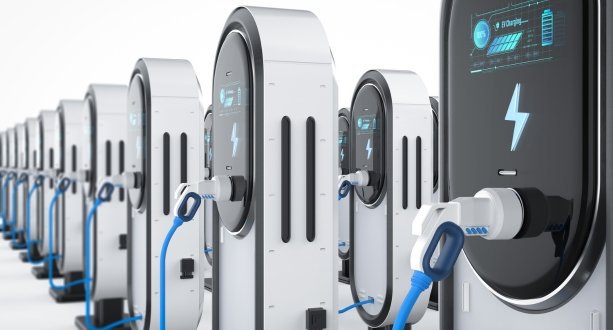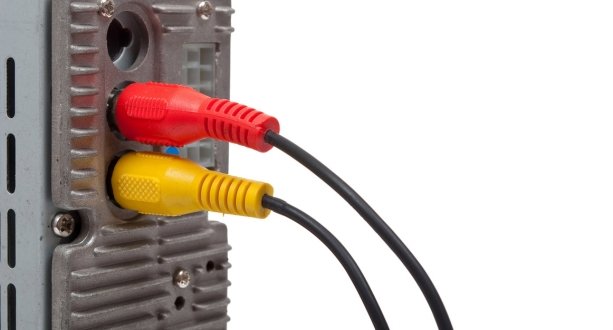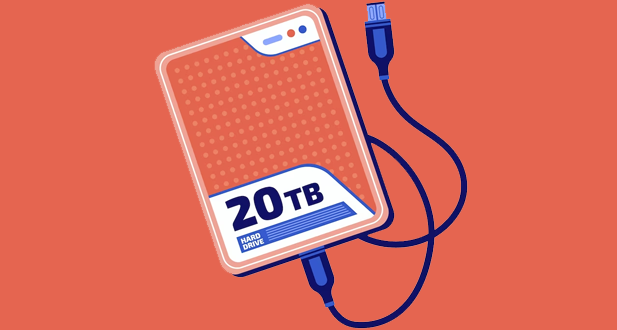Juice Jacking – Stealing Of Data Through Charging Cable:
Juice jacking is a form of attack that utilizes a USB cable to charge devices like phones and tablets, but can also be used to transfer data. While the cable typically used in this type of attack is a USB cable, it can also be an adapter battery backup device. Security experts recommend avoiding public charging stations, as they can be vulnerable to this kind of exploit. As the infected USB charging station is used to charge the device, it can compromise connected devices, including phones and tablets.
Juice jacking is when a malicious individual uses a charging port, cable, and/or USB port to load malware onto a victim’s device. Through this method, the malicious actor can steal data, install malware, and even disable mobile phones. This is done by connecting the device to an infected charging port or USB port. Juice jacking can also be used to upload malware onto connected devices that are connected to the same legitimate user’s port or cable. When this happens, it can allow malicious actors to access confidential information stored on the device.
Juice jacking is a form of cybercrime where a compromised public USB port is used to enable malware to be installed on your device. This malware can then infect your phone and steal your data, as well as track your keystrokes and download your files. It can also infect other cables connected to the public USB port, such as a charger, allowing it to infect any device charging its phone using the same port. When connecting your phone or other devices to a public USB port, you should always monitor the connection and be aware of potential malicious actors that may have compromised the charger or any cables attached to it. Even if you only intend on charging your device with the USB port, an infected cable could still track keystrokes and download files without you knowing.
This is called juice jacking, and it can be used by cybercriminals to steal data from phones and other smart devices. Attackers use the USB standard to modify the USB connections, infecting connection cables to deliver malware or create a pathway for them to steal data. Juice jacked chargers are often found in public places such as airport charging kiosks and charging stations. They look like regular USB ports but instead of charging your device, they load malware that can steal data from your device. To protect yourself from juice jacking, avoid using public charging kiosks or USB ports in public places as these are more likely to be tampered with. If you must use one of these public charging stations, bring your own cable or charger with you so you know it is safe.
Otherwise, you may be a victim of so-called juice jacking. This is when hackers plant malware into public charging ports and USB power stations, using power outlets or pluggable USB wall chargers. The hackers can then access the data on your phone via the USB connection when you use the charging station to charge your phones. To protect yourself against juice jacking, avoid using public charging ports or purchasing portable chargers from unknown sources. It is best to only buy certified and reputable brands of wall chargers and portable charging devices that have been tested to detect any malicious software or malware. Instead of relying on public charging stations, consider investing in an AC socket with multiple USB ports so you can charge multiple phones at once in the safety of your own home or office.
The cable was developed by security researchers MG and can send malicious code to a connected device, allowing hackers to steal user data like passwords. This type of attack is especially concerning because threat actors can mimic the design of common charging cables, such as USB-C cables, making it difficult for users to distinguish them from legitimate ones. In some cases, they may even be able to send personal information back to the hacker. The upgraded version of the cable illustrates this threat even further by being able to store stolen data in its memory. It also has an added feature that allows it to run malicious code on connected devices without their knowledge. This means that hackers could potentially gain access not only to passwords but also other sensitive information stored on these devices.
Plugging your phone into a USB port or inserting your USB cable into a passthrough USB device can open the door for hackers to download data from your devices. To prevent this, it is important to only use trusted and controlled compromised cables. Pass-through devices prevent hackers from gaining access to your computer, phones and other devices. However, if you plug your phone into an unsecured port or even a passthrough device that has been compromised, it could potentially allow a hacker to steal your data without you knowing.
This is known as “juice jacking,” where a person can use a USB charging cable to extract data from a device without the user’s knowledge. This can happen when you plug your phone into someone else’s charging cable or even at public phone charging stations or kiosks. Juice jacking is possible due to the additional data transfer pins in the USB connector, including data transfer pins that are used in some phones. Therefore, it’s important not to use someone else’s USB wire or electric port to charge your phone.
Juice jacking is a way hackers can introduce malicious USB cables to allow access to your device. Juice jacking occurs when an infected USB port or charging station cable is used to charge a smartphone. This allows the malicious actor to intercept the data being transferred from your device, exposing it to malware and viruses. The infected cable may also introduce a virus or other form of hackers into your device.
One common type of malicious USB cable is the USB Ninja Cable. These modified malicious charging cables can allow an attacker to gain access to your phone and access data stored on it. Security companies have demonstrated that a compromised USB cable can be used to gain access to your phones and compromise your security. Juice jacking attacks are when an attacker gains access to your phone screen and gains personal information or anything else they want from it through a compromised USB cable.
It is easy for someone to steal passwords and send private data through a disguised USB cable, especially if it’s a lightning cable. Logging keystrokes or sending keystrokes through a connected Mac keyboard is also possible. Even the normal lightning cable that comes with iPhones can be used by a bad actor to gain access to top secret facilities. The OMG Cable is one of the most popular ways for attackers to gain access to your phone.
How does Juice Jacking works:
Juice jacking is a type of cyber attack that occurs when a hacker tampers with USB charging ports, allowing them to steal data or files across devices. This type of attack occurs when a victim plugs their device into an infected USB port or USB charging cable. Once the device is connected, the hacker can install malware onto the victims device, giving them the capability to threaten and steal personal and identity information across devices. It is important for people to be educated on juice jacking and how it works in order to protect their personal data from falling into malicious hands. When out in public, individuals should be aware of where they are plugging in their usb charging cables at all times as there may be infected usb ports that could compromise their data security.
Juice jacking works by exploiting a technique that hackers use to target unsuspecting individuals. This exploit takes advantage of the USB cable used to charge a device and transfer data between two devices. When someone plugs their smartphone into an infected port, cyber criminals can take control of the device and access private information stored on it. Juice jacking attacks occur when malicious parties modify the wiring within the USB cable in order to sync their own device with another one and gain access to data stored on it. In most cases, these cables are disguised as regular charging cables so unsuspecting individuals are unaware they are using them until after it is too late.
Juice jacking is a cyber attack in which malicious actors take advantage of USB ports on mobile devices and use them to steal critical data. The attack works by connecting a charging cable, known as “juice”, to the device, which then allows the cybercriminals to gain access to any files that are stored on it. In addition, they can also record keystrokes made while using the phone and even install malware onto it.
Juice jacking works when a person unknowingly charges their device using a compromised charger or infected cables. Public USB ports are commonly used for this type of cybercrime, as unsuspecting victims plug in their devices to charge them. Once the phone is plugged into the malicious USB port, cybercriminals can install malware onto it without the user’s knowledge. The malware will allow the perpetrator to access data stored on the device, track its location and even record keystrokes made while using it. Furthermore, viruses can be spread through these infected USB ports and compromise other devices connected to them.
Juice jacking occurs when an unsuspecting person connects a mobile phone or other device to a maliciously modified USB connection cable, such as one left forgotten at a charging station. A malicious actor, or attacker, can use these cables to upload malware onto the connected device. When a legitimate user unknowingly plugs their phone into the infected cable and uses it to charge the device, they are unknowingly giving an attacker access to their mobile phone data. This process has become increasingly dangerous as many public places now provide charging ports and stations for unsuspecting people to plug their phones into while out and about.
How to be safe from juice jacking:
Juice jacking attacks have been around since cybercriminals started targeting mobile devices. These attacks take advantage of unsuspecting users who plug their mobile phone into an infected USB port at public charging stations. By doing so, malicious individuals can steal critical data from the device or even install malware that could result in identity theft or other crimes. To stay safe from juice jacking attacks, it’s important to only charge your device with trusted and reliable charging sources like a wall outlet or car charger. If you must use a public charging station, use your own charger and avoid leaving your device unattended while it’s plugged in.
Data charging cables, also known as USB data cables, can be used to protect against a juice jacking attack. A USB condom is a device that fits over the USB port and limits the power output from the USB port to just enough to charge your device. It also blocks any data transfer from taking place. Flash storage devices can contain malicious malware, so use a data blocker when connecting your phone or laptop to a public charging station. This will prevent any malicious content from entering your device. Finally, be aware of who is around you and what they may be doing while you are charging your devices at public charging stations. If possible, try not to leave them unattended for too long in order to stay safe from juice jacking attacks and other forms of cybercrime associated with public charging stations.
Use only special types of USB cables with USB Restricted Mode and Backup Power. This prevents data transfers and restricts the power input from the host device. iOS users should always keep their devices in ‘Restricted Mode’, which disables all security features when connected to an unknown USB cable. To be extra safe, use a power bank or purchase a special type of USB cable with a built-in passcode lock that prevents unauthorized access to your device when charging on public charging stations.
Using your own personal charger is the best way to avoid juice jacking, but it isn’t always possible. To be safe when using public USB chargers, always check to make sure it is a reputable brand and inspect the USB port for any signs of tampering or damage. Avoid plugging into computers or other devices that are not yours and never leave your device unattended while charging in public places. Hackers use devices that look like regular USB chargers to install malicious code on unsuspecting users’ devices through a process called juice jacking. Although this risk does exist, it is actually quite rare and should not prevent you from using a public charger if no other options are available. Some simple ways to protect yourself from juice jacking include carrying your own personal charger with you at all times, avoiding plugging into computers or other unknown devices, and only using reputable brands when charging your device via USB.
Juice jacking is a form of hacking where a hacker tampers with a USB charging port to gain access to phones or other devices and can steal data. To prevent this, it’s important to only use power supplies and USB connections that you trust. Educate yourself on identity theft so you can be aware of how your device’s data may be compromised if plugged into an unknown port. Use the public charger only if necessary, as there is always a chance that the power supply has been tampered with. If possible, avoid using public charging stations altogether; if you must use them, unplug your device as soon as it is charged and never leave it unattended while connected to the USB charging station.




